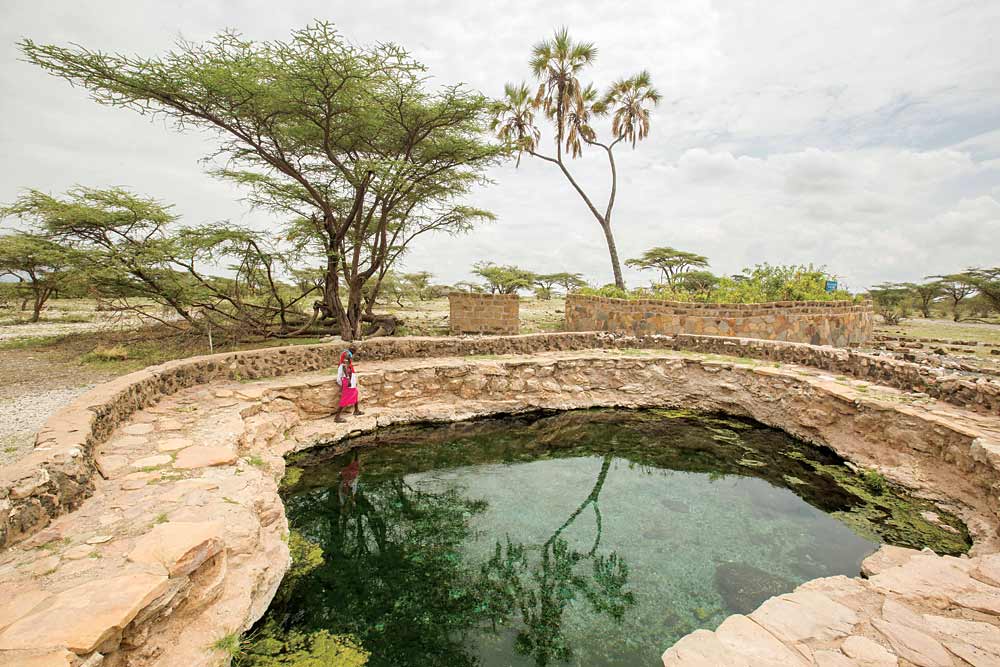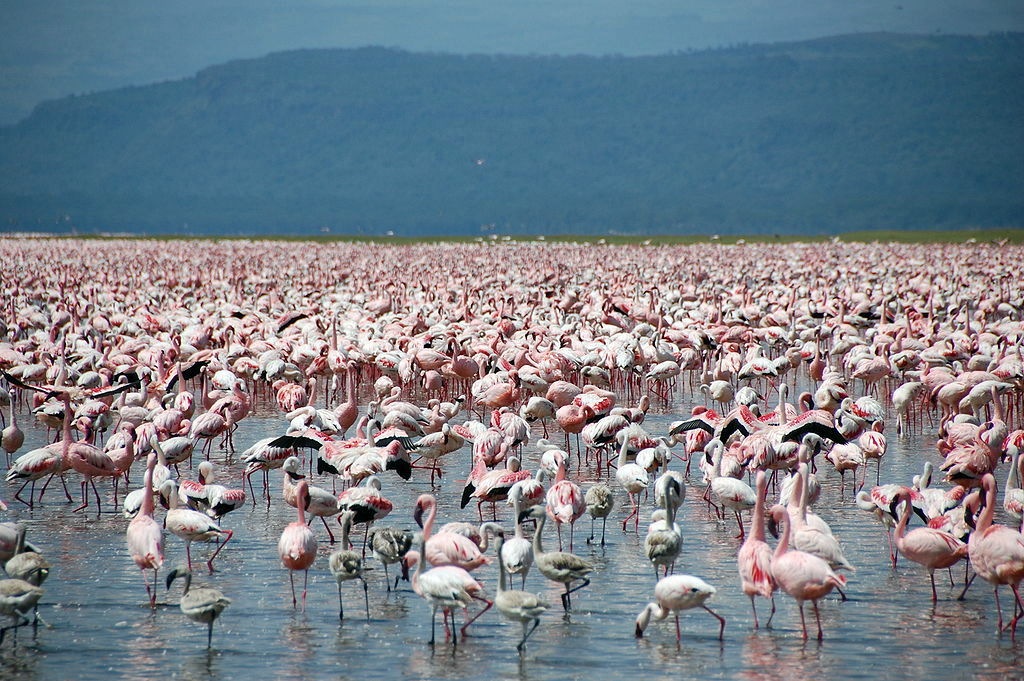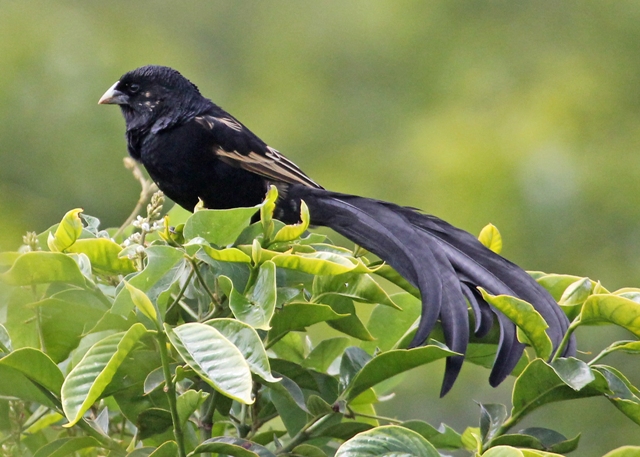Birding in Kenya – Best Time, Birding Trips and Birdwatching Tours
Birding in Kenya – Best Time, Birding Trips and Birdwatching Tours – Kenya is a birding paradise and has been globally recognized for hosting numerous sites declared important birding areas in the world, Kenya as a nation is home to over 1,060 bird species which are scattered through various destinations/ sites.
Kenya is a renowned habitat for some of the world’s most sought for bird species ranging from Ostriches the biggest bird in the world to millions of pink-colored flamingoes. In Kenya there are resident birds and migratory birds found in numerous sites, these sites include
Nairobi National Park
Nairobi national park is a top birding destination in Kenya located in the city center of Nairobi the capital city of Kenya, Nairobi national park is one kind of national park in the world famed for being the only wildlife park in the world to be situated in a city center.

Nairobi national park stretches over an area of 117 square kilometers dominated by open grasslands, lightly wooded plains, seasonal wetlands, dams, rocky valleys, montane forests, forest Lines River and streams.
Nairobi national park hosts over 500 bird species habiting in various vegetation covers of the park, birds found in this park include orange-breasted waxbills, black checked wax bills, yellow bishop, near-endemic Jackson’s widowbird, Shelley’s Francolins, Kori Bustards, Secretary Birds, Black-shouldered Kites, Grey Herons, African Darters, African Water Rail, Saddle-billed, Yellow-billed, Marabou Storks, the elusive African Finfoot, Eurasian Bee-eaters, Blackcaps, Common Nightingale, Upcher’s and Willow Warblers and many more.
Mt Kenya National Park
Mount Kenya national park is a very scenic national park in Kenya comprising Mount Kenya the highest mountain in Kenya and the second-highest peak in Africa, Mount Kenya national park is a UNESCO World Heritage site located in the east of the Great Rift Valley and 175 kilometers northeast of Nairobi the capital city of Kenya.
Mount Kenya national park is a great bird habitat with over 130 bird species, bird species in this park include 6 of the 8 Kenya mountains endemic bird area species, 54 of 70 of Afrotropical highland biome species of Kenya, and rare species. Birds in Mount Kenya national park live in a range of vegetation covering park various sections of the park such as montane forest, bamboo, and moorland vegetation.
Birds in mount Kenya national park include Olive Ibis, Abyssinian Ground Thrush, Black-fronted Bush-shrike, Montane White-eye, Bar-tailed Trogon, Jackson’s Francolin, Mountain Buzzard, Abbot’s Starling, Mountain and Slender-billed Greenbuls, White-headed Wood hoopoe, White-starred Robins, Thick-billed Seedeater, and Oriole Finch, Northern and Eastern Double-collared, Tacazze, Malachite, Scarlet-tufted, and Golden-winged Sunbirds, Moorland Chat, White-naped Ravens and many more
Samburu national reserve
Samburu national reserve is a birding haven in Kenya situated along the banks of the great Ewaso Nyiro River and geographically located in Samburu country, this reserve is famous for being one of the two areas in which conservationists George and Joy Adamson raised Elsa the lioness and home to a lioness Kamunyak who adopted Oryx calves. Samburu national reserve was established in 1985 covering an area of 165 square kilometers which is dominated by wooded grassland, riverine forests, acacia, and thorn trees.
Samburu national reserve is a habitat to over 350 bird species spotted on a birding safari in Kenya, these birds include grey-headed kingfisher, sunbirds, bee-eaters, Marabou stork, tawny eagle, Verreaux’s eagle, Bateleur, vulturine guinea fowl, yellow-necked Spurfowl, lilac-breasted roller, secretary bird, superb starling, northern red-billed hornbill, yellow-billed hornbill, various vultures including the palm-nut vulture and many more.
Buffalo Springs National Reserve
Buffalo springs national reserve is a birders haven in Kenya situated on the other side of Ewaso Nyiro River south of the Samburu national reserve, this reserve is located in northern Kenya, Eastern Province in Isiolo district. Buffalo Springs National Reserve was established in 1948 covering an area of 131 square kilometers which is dominated by a narrow band of riverine forests along the Ewaso Nyiro River, bushland with Commiphora, scattered grass and shrubs, and doum palms.
Buffalo Springs National Reserve is a habitat for over 360 birds species encountered while on a birding safari, these birds include Abyssinian ground hornbill, Acacia tit, Bare-eyed thrush, African palm swift, Ashy cisticola, Bare-eyed thrush, Black-bellied Sunbird, Black-capped social weaver, Bristle-crowned starling, Brown-tailed rock chat, Chestnut weaver, Donaldson-Smith’s sparrow-weaver, Egyptian vulture, Fischer’s starling, Golden pipit, Golden-breasted starling, Greater kestrel, Grey wren-warbler, Hunter’s Sunbird, Lanner falcon, Mariqua sunbird, Northern Brownbul, Palm-nut vulture, Pink-breasted lark, Pygmy batis, Red-bellied Parrot, Red-necked falcon, Red-winged lark, Reichenow’s seedeater, Rosy-patched bush-shrike, Rufous chatterer, Secretary bird, Singing bush lark, Somali bee-eater, Somali ostrich, Spotted palm-thrush, Von der Decken’s hornbill, Vulturine guinea fowl, White-headed mousebird, Yellow-vented Eremomela and many more
Lake Naivasha
Lake Naivasha is a freshwater lake in Kenya and a great birding destination located outside the town of Naivasha in Nakuru County, the lake is part of the Great Rift Valley covering a surface area of 139 square kilometers with a maximum depth of 30 meters. Lake Naivasha is surrounded by swamps and yellow fever trees on its edges habiting over 350 bird species, the lake is a Ramsar site and the second site in Kenya to be listed by Kenya as a Wetland of International Importance under the Ramsar Convention.
Lake Naivasha habits water birds and woodland birds which include Great White and Pink-Backed Pelicans, Reed and Great Cormorants, African Darters, Yellow-billed Ducks, Red-billed and Hottentot teals, Red-knobbed Coots, Black and Grey Herons, Great White, Little and Cattle Egrets, African Spoonbills, African Skimmers, Grey-hooded, Lesser Black-backed, and Common black-headed Gulls, Lesser and Common Moorhen, Purple Swamphens, African Fish Eagles, White-fronted Bee-eaters, Wahlberg’s Honeybird, Black-lored, and Arrow-marked Babblers, Variable Sunbird, Green-Wood hoopoe, African Grey, Cardinal, and Nubian Woodpeckers and many others.
Kinangop Plateau
Kinangop Plateau in Kenya is a remarkable birding site, the plateau is an abrupt floor rising off the rift valley floor and living between the Kenyan Rift Valley to the west and the Aberdare range to the East. Kinangop Plateau is located about 25 kilometers north of Gatamaiyu forest on the western slope of the Aberdare Mountains.
Kinangop Plateau is dominated by grasslands, tussock bogs, and swamp valleys habiting over 143 bird species with endemic species such as Sharpe’s Long claw and 3 near-endemic species. Birds found in Kinangop Plateau include Sharpe’s Longclaw, Rufous-naped, and Red-capped Larks, Cape Rook, Capped Wheatear, Long-tailed and Jackson’s Widow birds, Hunter’s, Levaillant’s and Stout Cisticolas, Red-throated Wryneck, Augur Buzzards, Grey-crowned Cranes, Yellow-crowned Bishop, Glossy Ibis, the elusive Lesser Jacana. Migrant Harriers such as Western Marsh, Pallid and Montagu’s Harriers, and many more.
Lake Baringo
Lake Baringo is a birdwatchers paradise in Kenya located in the most northern of Kenyan rift valley lakes after Lake Turkana, Lake Baringo is one of the two freshwater lakes in Kenya covering an area of 130 square kilometers and it is fed by several rivers such as the Molo, Perkerra and Ol Arabel.
Lake Baringo is situated in a semi-arid area so similar to that of Samburu national reserve, the lake is surrounded by steep cliffs on one side of the lake and mixed woodland and grasslands on the opposite site. Lake Baringo has boosted over 500 recorded bird species with bird species such as Verreaux’s Eagle, Grayish Eagle Owl, Hemp Richs Hornbill, Fan-tailed Raven, Brown-tailed Rock Chat, Mocking Cliff Chats, Bristle-Crowned Starlings, Pygmy Batis, Three-streaked Tchagra, Brubru, and Red-fronted Warbler, Heuglin’s Courser, Jackson’s Hornbill, Spotted Thicknee, Lichtenstein’s Sand grouse, Northern White-faced and African Scops Owls, Northern Red Bishop, Northern Masked, Little and Golden-backed Weavers, Allen’s Gallinule and Black Crakes and many more.
Kakamega forest
Kakamega forest is a tropical rainforest stretching through two Kenya counties that are Kakamega and Nandi County and lies northwest of Nairobi the capital city of Kenya and near to Kenya – Uganda border. Kakamega forest is an excellent birding spot in Kenya and the only remnant of the Guinei-Congolese rainforest in western Kenya, this forest boosts over 450 recorded bird species with endemic species to the forest and found nowhere else in East Africa such as Blue-headed Bee-eater, Anchorage’s, and Kakamega Greenbuls.
Also, there are uncommon bird species such as Yellow-bellied Wattle-eye, Equatorial Akalat, Turner’s Eremomela, Southern Hyliota, and African Broadbill. Other birds found in the Kakamega forest include White-spotted Fluff tails, Banded Prinia, Grey-chested and Black-faced Rufous Warblers, Scaly-Breasted IIladopsis, Great Blue Turaco, African Crowned Eagle, Western Banded Snake-eagle, Black-and-white Casqued Hornbills, Yellow-spotted, Grey-throated, Hairy-breasted, and Yellow-billed Barbets and many more.
Masai Mara National Reserve
Masai Mara national reserve is one of the most popular destinations in Kenya and a great birding destination, this reserve is located in the rift valley province of Kenya with Narok as the nearest town. Masai Mara national reserve is a renowned national park for wildebeest migration, big five animals, and a high concentration of birds, the park is dominated by grasslands, riverine forests, acacia scrubs, and Cliffs.
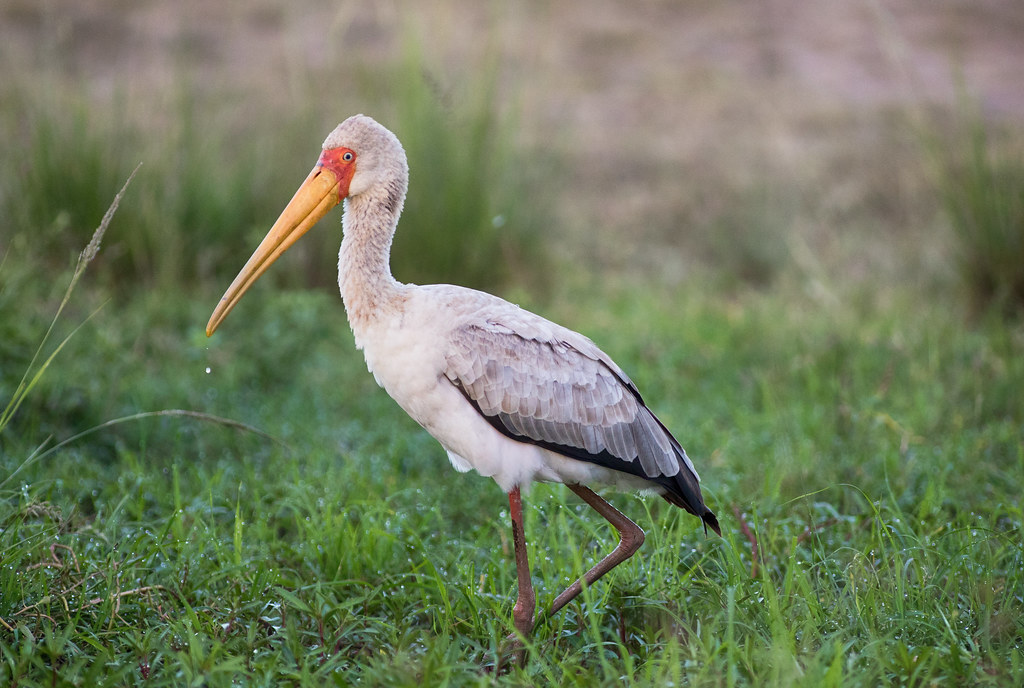
Masai Mara national reserve is a habitat to over 500 recorded bird species with 50 top birding sites in Kenya, grassland species, rare species, riverine forests, endemic species, and scrub and bush species. Birds in Masai Mara national reserve include Red-necked Spurfowl, Black-bellied Bustards, Crowned and African Wattled Lapwings, Temminck’s Courser and Fawn-colored Larks, Magpie Shrike, Karamoja Apalis, Pale Wren Warbler, Rufous-tailed Weavers, Usambiro Barbet, Green-capped Eremomela, Shallow’s and Ross’s Turaco, Bare-faced Go-away-bird, Green-backed and Golden-tailed Woodpeckers, Yellow-throated Greenbuls, White-chinned Prinia, Luhders Bush-shrike and about 10 species of Cisticolas; including Long-tailed, Red-faced, Croaking, Siffling, Black-backed and Rock-loving Cisticolas and many more.
Arabuko-Sokoke Forest
Arabuko-Sokoke forest is the largest remaining coastal forest in East Africa and a common birds destination in Kenya, the forest is located in the coastal province
It is the largest remaining coastal forest in East Africa and famous for its diversity in mammals, butterflies, amphibians, and birds, many of which are only found here. The endemic Clarke’s Weaver is also found here.
The forest is made up of miombo woodland, Cynometra, and mixed forest. The main forest highlights would be; Sokoke Scops Owls, Amani Sunbird, East Coast Akalat, Red-tailed Ant-thrush, Fischer’s Turaco, Mombasa Woodpecker, Little Yellow Flycatcher, and the endemic Weaver.
But of course, there are many more enjoyable birds to see, the open miombo woodland is great to search for gorgeous Bush-shrike, Forest and Pale Batis, Dark-backed Weaver, Southern-banded Snake-eagle, African Pygmy Kingfisher, Yellow-bellied and Fischer’s Greenbuls.
The mixed forest is much denser and sometimes impenetrable, but cool species seen here are Blue-mantle Crested Flycatcher, Tiny Greenbuls, Terrestrial and Northern Brownbul, Green Barbet, Eastern Green Tinkerbird, Peter’s and Green-backed Twinspots. Fiery-necked Nightjars and African Wood Owls can commonly be seen on the forest edges at night.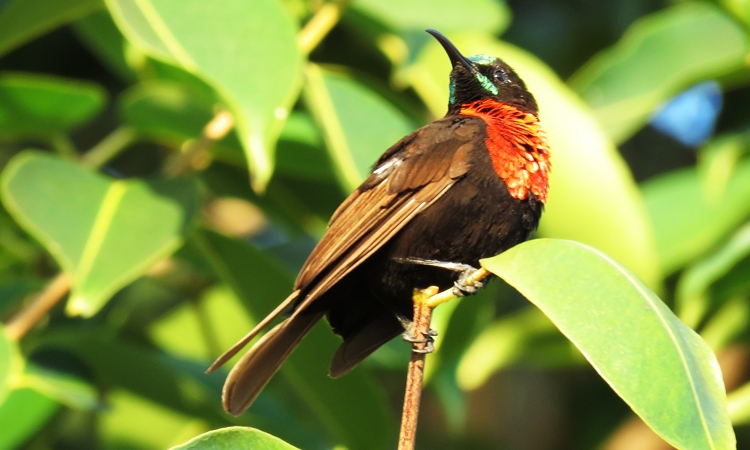
Mida Creek
Mida creek is an excellent birding destination in Kenya for migrants’ seabirds, Mida Creek is a hidden gem in Watamu and a tidal inlet stretching inland from the Indian Ocean to into Arabuko-Sokoke forest. Mida Creek is a broad water tidal creek of 32 square kilometers, the creek is surrounded by extensive mangroves and lined with palms, beds of seagrass, and corals which habit birds.
During high tides the creek floods and when the tides go out wanders and sea birds converge at the beach to feed on the algae and other little water creatures. Birds in Mida Creek include migrant species and resident small birds in Kenya, migrant species include Common Ringed Plovers, Greater and Lesser Sand Plovers, Crab Plovers, Common Greenshanks, Whimbrel, Grey Plovers, Eurasian Curlews, Terek, Marsh, and Common Sandpipers are easily spotted and seen in good numbers. Gull-billed, Caspian, Saunders, Common Terns, and Sooty Gulls.
Resident Kenya birding include Black-headed Batis, Three-banded Plover, African Paradise Flycatcher, Black-bellied Starling, Zanzibar Greenbuls, and Speckled Mousebirds, Village Weavers, Purple-banded, Amethyst and Violet-Breasted Sunbirds. There are also afro-tropical migrants such as; African Golden Oriole, Mangrove Kingfisher, and Red-capped Robin-chats.
Best time for birding in Kenya
Best Birding in Kenya, is good all year round but the best time for this experience is in the prime period experienced from September to April, in this period migratory bird species from Europe and Northern Africa are present. In this same period, Kenya resident bird species are nesting and are in breeding plumage.



